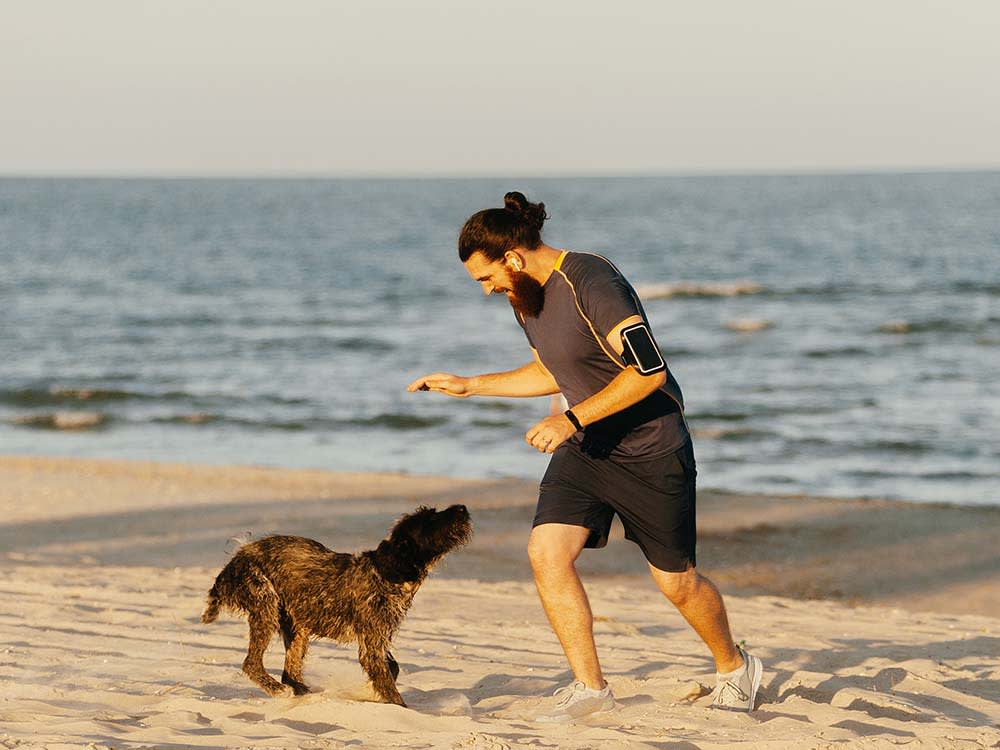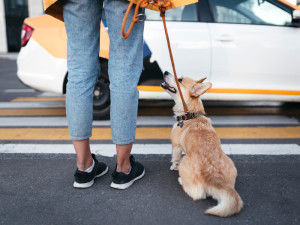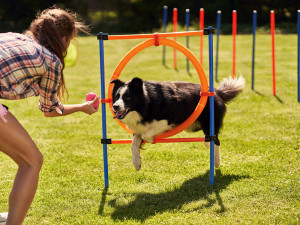Strategies for Encountering Dogs While Running
Tips on what to do if a dog chases you.
Where I live in Flagstaff, we have the same problems with off-leash dogs that most communities face. There are some people who think, for whatever reason, that leash laws don’t apply to them and their dogs. All runners, including me, have faced dogs charging at us on the trails and on the roads. It’s a risky situation when you are faced with a dog who is, at best, overly enthusiastic, and at worst, aggressive. Sometimes there’s a guardian around, but not always. Even when they are present, the situation can be alarming, either because the person seems frantic to get the dog back. (“Come! Get over here! No bite!”) or because there is no concern as a dog leaps at innocent passersby. (“Don’t worry, he’s friendly!”)
Flagstaff is a running mecca where many of the best runners in the world come to train in order to take advantage of the 7000-foot altitude and the endless miles of trails. My worst nightmare is that some Olympian or Olympic hopeful will be bitten and that the injury will ruin someone’s lifetime dream. Even without such dire consequences, derailed workouts and being truly afraid are not cool, whether it happens to an elite athlete or to any of the rest of us regular runners.
Trick question: All dogs are perfect! But find out which type is the best fit for you.
I am often asked what to do when a dog charges at someone or chases them on a run. There are so many variables in these situations that it’s difficult to make blanket statements or provide all the possibilities, but there are general guidelines for minimizing the chance that a scary situation turns injurious.
What To Do If You See An Off-Leash Dog
Here are a few of my top tips for what to do if you see an off leash dog to prevent it from chasing you while running.
How much do you spend on your pet per year?
Stay Calm
The first and most important thing you should do is to stay calm. Adding any sort of excitement to the situation is counterproductive, because it may over-excite the dog.
Slow Down
When you are being chased by a dog or encounter an off-leash a dog on your run, it is important to slow down to a walk or stop completely. Speed is intoxicating to many dogs, who give chase to anything that’s moving such as squirrels, cats, dogs and runners — it’s the reason why dogs chase you when you run. The fastest runners — the elites — are more likely to be chased, which I think is due in part to their graceful, gazelle-like build and gait. Other reasons a dog may chase is when they are trying to “herd runners”, which may account for a lot of the bites to the back of the legs and ankles.
Scare Less
If you are wearing sunglasses or a hat, take them off. Many dogs are scared of people wearing hatsopens in new tab and other such accessories so they charge or chase out of fear. If you remove them, some dogs realize you are just a human, not a monster, and ease off.
Stay Away
Swing wide to create more distance between you and the dog. A lot of dogs are chasing or charging to keep you away from their property, so if you act in accordance with these dogs’ wishes, you minimize the chances of trouble.
Speak Softly
Say things that may put the dog in a good mood, using a cheerful voice. This seems ridiculous to many people, but I swear that changing the dog’s emotional state can work wonders. The phrases that are most likely to have an effect are “Wanna go for a walk?”, “Dinnertime!”, “Where’s your ball?”, and “Good dog, good dog, good dog.” So many dogs are conditioned to react happily to one or more of these phrases, and that means they have the power to diffuse a tense situation. Speaking in a happy voice, even though you have to fake it, makes this strategy more effective.
Similarly, a few dogs will respond if you give them a cue, telling them to sit, go home, or stay. Many dogs are too worked up to react, but it does work sometimes. And giving a cue or using a happy phrase is exceedingly unlikely to make things worse, so both are worth a try.
Plan B: Change Your Route
Another option is to turn and head the other way. Yes, it’s frustrating to have to change your route because of a misbehaving off-leash dog, but safety first! Many dogs are trying to get you to go away, and if you do, they will leave you alone. It’s best to head the other way slowly so you don’t incite the dog to chase you.
What NOT To Do...
While these things may come instinctually, it is important not to take the following actions, as adding any sort of excitement to the situation is counterproductive.
Don’t Yell Or Scream At The Dog
Many dogs are afraid and yelling at a dog who is off-leash will only make their fear, and therefore their undesirable behavior, worse. Screaming agitates many dogs, and makes them even more unpredictable.
Don’t Stare At The Dog
Though staring at a dog is often suggested, staring is actually an overtly threatening behavior and will cause many dogs to react even more aggressively to you. It will rarely cause a dog who is going after you to back off.
Don’t Throw Anything At Dog
Similar to above, throwing things at the dog can be perceived as threatening, which may make the situation escalate rather than improving it.
Don’t Use a Stick As A Weapon
This is far too likely to frighten a fearful dog or to be taken as an escalation of any confrontation by dogs who are on the offensive.
No technique is foolproof, but the general rule is to try to get out of the situation calmly and quickly without making the dog any more upset. It’s not about who is right and who is wrong or whether the dog is legally allowed to be off leash where you are running. It’s just about avoiding a serious issue so that you can not only keep running today, but in the future.




